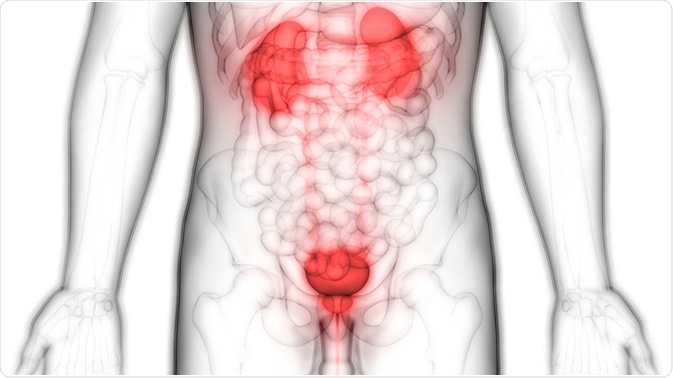
Muscle Invasive Bladder Cancer (MIBC)
Muscle invasive bladder cancer (MIBC) is an advanced stage of bladder cancer that invades the smooth muscle lining of the bladder.
What is Bladder Cancer?
Bladder cancer typically originates in the urothelium, which is a type of transitional epithelium that forms the inner most lining of the bladder.
This type of lesion is called urothelial carcinoma. In general, urothelial lesions are categorized into two subtypes: basal and luminal, each having a different type of gene expression pattern. Basal tumors, which originate from the urothelial basal cells, are more aggressive in terms of developing metastatic lesions. This type of tumor frequently undergoes squamous or sarcomatoid differentiation.
In contrast, luminal tumors, which originate from the luminal or intermediate cells of the urothelium, mostly include papillary lesions.
Of all urinary tract cancers, about 90% is bladder cancer. In the United States, it is the fifth most common cancer, with a prediction of 79,000 new incidences and 16,800 cancer-related deaths in 2017.
Bladder cancers are categorized into different stages based on their invasiveness. Lesions that are restricted to the urothelium and do not invade any other muscle layer are grouped as non-muscle invasive bladder cancer (NMIBC).
Carcinoma in situ or stage Tis, stage Ta (tumors of the mucosa), and stage T1 (tumors that invade the lamina propria) are included in NMIBC. In contrast to NMIBC, tumors that invade bladder wall muscle (stage T2), perivesical fat layer (stage T3), and nearby organs (stage T4) are grouped as MIBC.
Most of the patients with bladder cancer are presented with NMIBC at the time of diagnosis, of which, superficial recurrence occurs in 35 – 70% of cases, and advancement to MIBC occurs in 50% of cases.

Human Body Organs (Kidneys with Urinary Bladder). Image Credit: Magic mine / Shutterstock
What is MIBC?
Urothelial cancers become more aggressive when they gradually grow into and through the bladder wall. Such high grade urothelial lesions are called MIBC. These lesions may eventually spread outside the bladder to develop metastatic lesions in other organs, including lymph nodes, liver, lungs, bones, etc. MIBC has a very poor prognosis, with a 5-year survival rate of less than 10%.
MIBCs that are found to be present at the initial diagnosis are called primary MIBCs. In contrast, MIBCs that develop from NMIBCs over time are called secondary MIBCs. Regarding cancer prognosis, some studies suggest that secondary MIBCs may have a better outcome than primary MIBCs, because of their initial non-invasive characteristics.
However, contrasting studies posit that secondary MIBCs may actually be associated with a worse prognosis, because of the progressive nature of NMIBCs. In this regard, a recent systematic review and meta-analysis involving 4075 bladder cancer cases has revealed a significant correlation between secondary MIBC and poor cancer-specific survival.
MIBC Genetics
According to the Cancer Genome Atlas (TCGA) Research Network, 2014, a total of 54 genes were found to be significantly mutated in a group of 412 bladder cancer patients who were not subjected to any therapy.
The most frequently mutated genes are associated with cell cycle regulation, epigenetic modification, and PI3K signaling pathways.
Regarding cell cycle regulation pathways, two tumor suppressor genes, namely TP53 and RB1, are the most frequently mutated genes, which are found to be inactive in 76% and 14% of cases, respectively.
Regarding epigenetic pathways, mutations in various chromatin-regulating genes are identified in 76% of cases. Moreover, alterations in PI3K/AKT/mTOR and receptor tyrosine kinase/RAS pathways in terms of sequence variation, changes in copy number, and abnormal mRNA expression are identified in 42% and 44% of cases, respectively.
Surveillance for MIBC
Since incidences of recurrence and disease progression are very high in MIBC, a regular follow-up is mandatory in order to prevent detrimental outcomes. These follow-up protocols are primarily based on the patient’s clinical features and conditions.
An intensive follow-up schedule is particularly required in patients with metastatic and node-positive lesions. It has been found that about 50% of patients who have undergone radical cystectomy (complete removal of the urinary bladder) experience local or systemic tumor recurrence.
In these cases, monitoring of the lower urinary tract including the urethra should at least be performed for 5 years, and monitoring of the upper urinary tract should be performed for the rest of the patient’s life.
In case of bladder preservation treatment that includes radiation therapy, chemotherapy, and transurethral resection of bladder tumor, early endoscopy and imaging analysis are necessary for determining an effective follow-up regimen.
Sources
- www.urologyhealth.org/.../muscle-invasive-bladder-cancer
- www.mayoclinicproceedings.org/article/S0025-6196(17)30568-2/fulltext
- https://www.nature.com/articles/s41598-018-26002-6
- https://www.sciencedirect.com/science/article/pii/B9780128099391000308
- https://www.ncbi.nlm.nih.gov/pmc/articles/PMC4383273/
Further Reading
Last Updated: Oct 19, 2018






















.png)











No hay comentarios:
Publicar un comentario